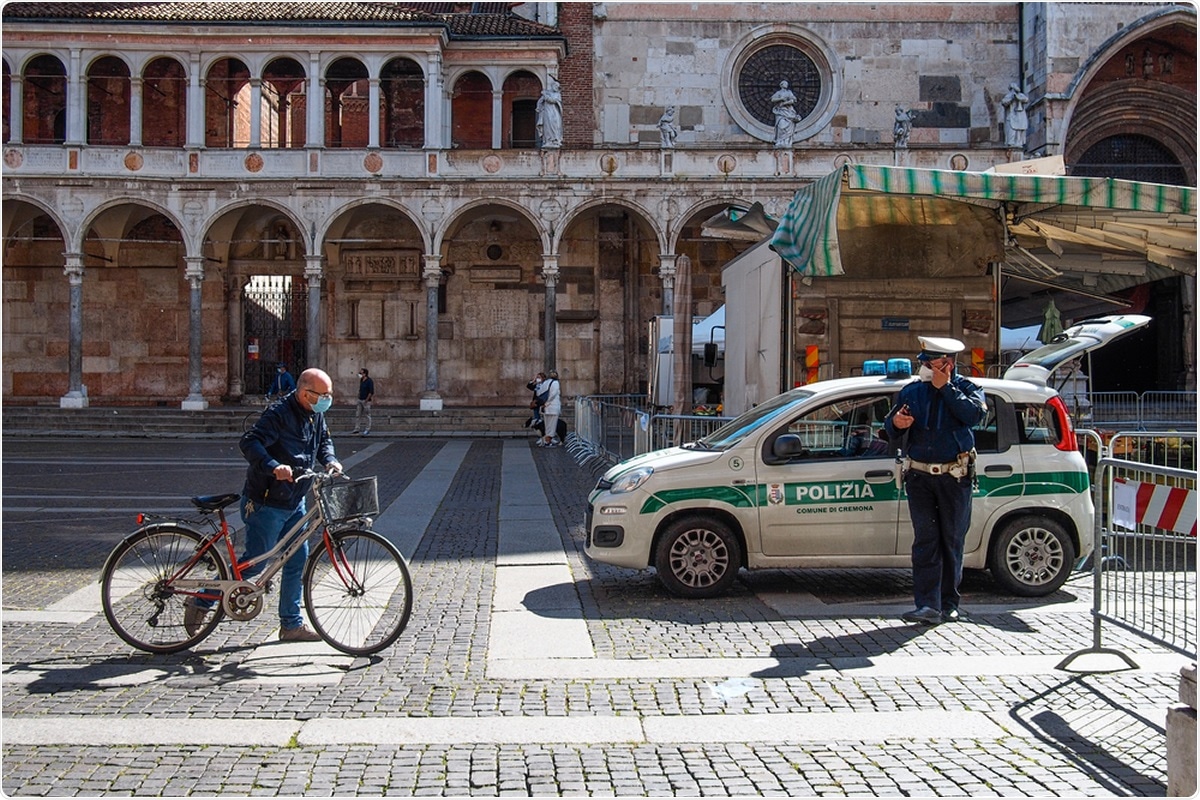https://www.news-medical.net/news/20201117/SARS-CoV-2-was-circulating-in-Italy-before-China-recognized-its-existence.aspx
SARS-CoV-2 was circulating in Italy before China recognized its existence
The coronavirus disease (COVID-19) pandemic first emerged in Wuhan City, China, in late December 2019. From there, it has spread to 191 countries and territories, infecting over 55.5 million people worldwide.
The emergence of the SARS-CoV-2 virus is thought to be tied to a wet market in Wuhan. But now, new evidence from Italy suggests that the virus may have been lingering around even before December 2019.
The Italian team of scientists found severe acute respiratory syndrome coronavirus 2 (SARS-CoV-2) antibodies in people across several Italian regions as far back as September 2019.
This study, published in the Tumori Journal, sheds light on the possibility that the virus had been spreading in Italy well before the outbreak was officially reported in Wuhan, China.

Italy's first reported cases
Italy reported its first cases of COVID-19 when two tourists from China tested positive for SARS-CoV-2 in Rome. The first laboratory-confirmed Italian COVID-19 case was detected in Lombardy on February 20, 2020. The male patients had no history of possible contacts with positive cases in Italy or abroad.
Within a few days, more cases were recorded in the area. Soon, the government imposed a lockdown in the country to contain the virus spread.
It is widely believed that the virus had been circulating in Italy since January 2020. However, the rapid spread of the virus, the large number of people requiring hospitalization, and treatment in intensive care units suggest that the virus's arrival in a less symptomatic form could be several months prior.
So far, Italy has over 1.23 million cases and a staggering 46,464 deaths.
Serologic assays
Serologic tests or assays measure the antibody response in a person. Antibodies to COVID-19 are produced over days to weeks after infection.
The presence of antibodies shows that a person has been infected with SARS-CoV-2, irrespective of whether he had severe or mild disease. The test can also detect those who had an asymptomatic infection.
Anti-SARS-CoV-2 antibody response analyses in patients with COVID-19 showed that within 13 days after the onset of symptoms, seroconversion of antiviral immunoglobulin G (IgG) or immunoglobulin M (IgM) was present in almost 100 percent of patients.
The study
To arrive at the study findings, the research team investigated the frequency, timing, and geographic distribution of SARS-CoV-2 exposure in a series of 959 asymptomatic individuals, using SARS-CoV-2 binding and neutralizing antibodies on the plasma samples repository.
These individuals were originally enrolled in a prospective lung cancer screening trial between September 2019 and March 2020 to track the date of onset, frequency, and temporal and geographic variations in lung cancer across the Italian regions.
The study findings
The researchers performed receptor-binding domain (RBD)-specific enzyme-linked immunosorbent assay (ELISA) testing. Of the 959 plasma samples, 111 showed SARS-CoV-2 RBD-specific antibodies (IgM, IgG, or both). Specifically, they detected IgM antibodies in 97 samples and IgG antibodies in 16 samples. All of the patients had no symptoms at the time blood samples were collected.
In the first two months of the study, the researchers revealed that 14.2 percent of the patients in September and 16.3 percent in October exhibited SARS-CoV-2 IgG or IgM antibodies, or both. The team found the first positive case (IgM-positive) on September 3 in the Veneto Region, followed by one case in Emilia Romagna on September 4, Liguria on September 5, and one in Lazio on September 11.
By the end of September, 13 of the 23 positive samples were detected in Lombardy, Italy's hardest-hit region. The team also detected three cases in Veneto, two in Piedmont, and one in Liguria, Emilia Romagna, Campania, Lazio, and Fruili.
Further analysis showed two heights of positivity for anti-SARS-CoV-2 RBD antibodies. The first one began at the end of September, reaching 18 percent in the third week of October. The second one happened in February 2020, with a peak of more than 30 percent of IgM-positive cases in the second week.
- COVID-19 Dashboard by the Center for Systems Science and Engineering (CSSE) at Johns Hopkins University (JHU) - https://gisanddata.maps.arcgis.com/apps/opsdashboard/index.html#/bda7594740fd40299423467b48e9ecf6
- Apolone, G., Montomoli, E., Manenti, A, et al. (2020). Unexpected detection of SARS-CoV-2 antibodies in the pre-pandemic period in Italy. Tumori Journal. https://journals.sagepub.com/doi/10.1177/0300891620974755
Posted in: Medical Research News | Disease/Infection News





Nessun commento:
Posta un commento